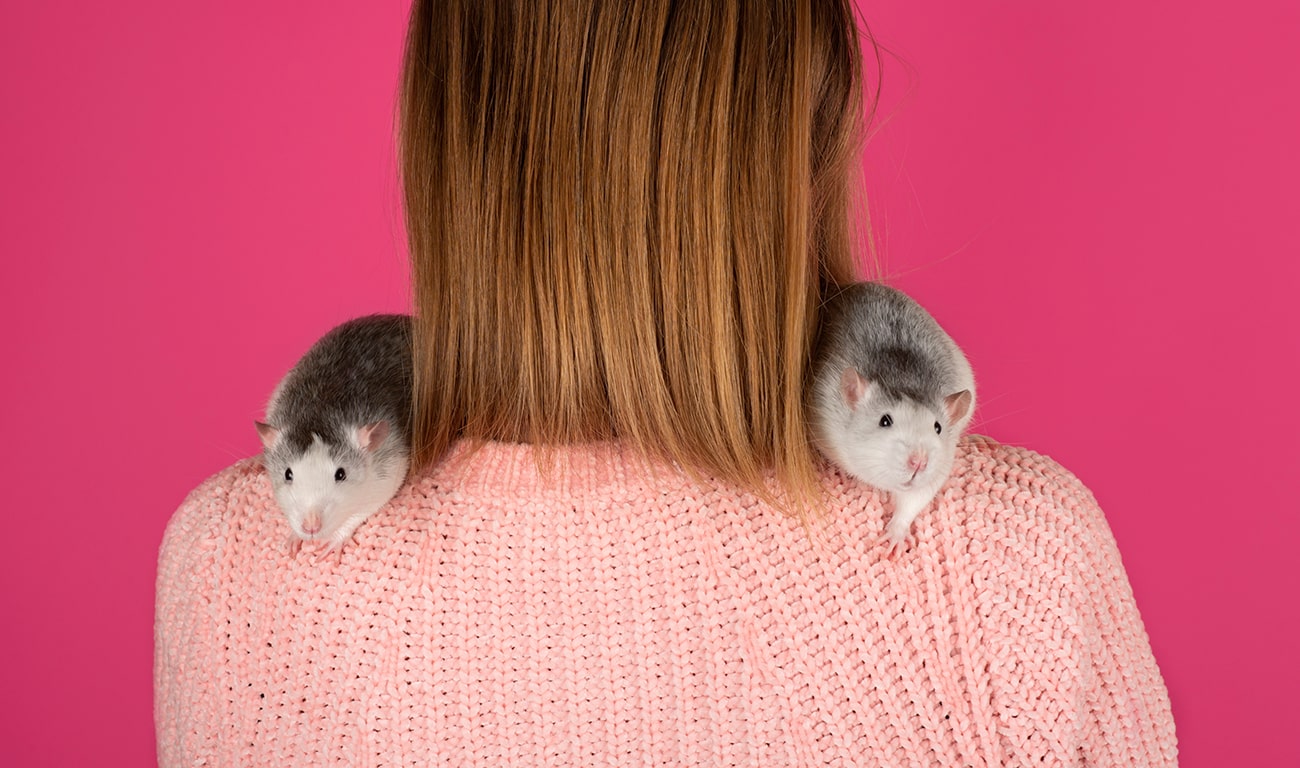JavaScript seems to be disabled in your browser. For the best experience on our site, be sure to turn on Javascript in your browser.
What Kinds of Fancy Rats Are there?

People had started keeping rats, squirrels, mice, and other small animals as pets as far back as centuries and possibly millennials, but the domestic rat as we know it today originated in England in the mid-1800s.
Queen Victoria's royal rat catcher, Jack Black, whose job was to control the vermin infestation at the time but somewhere along the line, he learned that catching rats alive was more lucrative hence the era of keeping fancy rats began.
Before we proceed to discuss the types of fancy rats there are, check out the latest additions to our rat cage and rat healthcare collections.
Types of fancy rats
Albino Rats
Albino rats are different from the regular wild rats who are usually brown (agouti) in color. They were bred first for looks but somewhere down the line they also were bred to increase tame stock which resulted in the modern laboratory rat being born, bred, and utilized. Albinos were mostly bred back to their agouti counterparts for numerous generations. This started to mutate their color even more.
Black rats
They were born to agouti parents and then those too were added into the collective breeding project. They started getting domesticated when white feet and spots became apparent in some of the newer generations. This was due to a masking gene called the over-spotting gene. They were called piebalds and probably only had white stomachs and chests. Selective breeding made their white spread until there was a variety of markings to choose from.
Manx Rats
First recorded in the 1920s when four rats were born in an American laboratory, these rats are born without tails or even tails that are shorter than that of their parents. They simply have stubs or no tail at all. After the first discovery, the first Manx were bred to see if they can create more Manx but their genes proved problematic. Female Manx with no tails couldn't give birth and breeding a tailless male Manx to a half-tailed female Manx, didn't promise any more Manx offspring.
Even when offspring were produced, it was not so sporadically and researchers lost interest. The Manx didn't appear again until it popped up in the pet population at a much later date.
There is no evidence to indicate that they are the descendants of the laboratory rats but we cannot completely disregard the possibility.
Satin Rats
Satin rats were first discovered in the 1990s. They had very smooth and slippery hair, whose shafts were flat rather than round, developing a satin effect. Satins are mostly bred with rex rats to give birth to velveteen rats. Satin, like rex, is a strong and dominant gene and appears to have been spontaneous.
Zuker Rats
The Zucker rat is a strain of piebald rats bred in the laboratory to be super obese. These rats have very little control of their weight and can grow to be enormously fat even when they are being fed the same amount of food as a regular thin rat. These rats are used especially in diabetes research and are not specimens most enthusiasts would want within the pet trade because of how fragile their health can be.
Some Zucker rats have been seen outside their laboratory environment and kept by some rat lovers but no recognized effort has been made to breed them for the market.
Dumbo Rats
Rat enthusiasts went wild for this new mutation whose ears were rounder, lower on the head, and whose skulls started to resemble Bull Terriers. Dumbo rats entered the scene when a litter was born in California in 1990 that had a male dumbo spontaneously appear. They have recessive genes.










